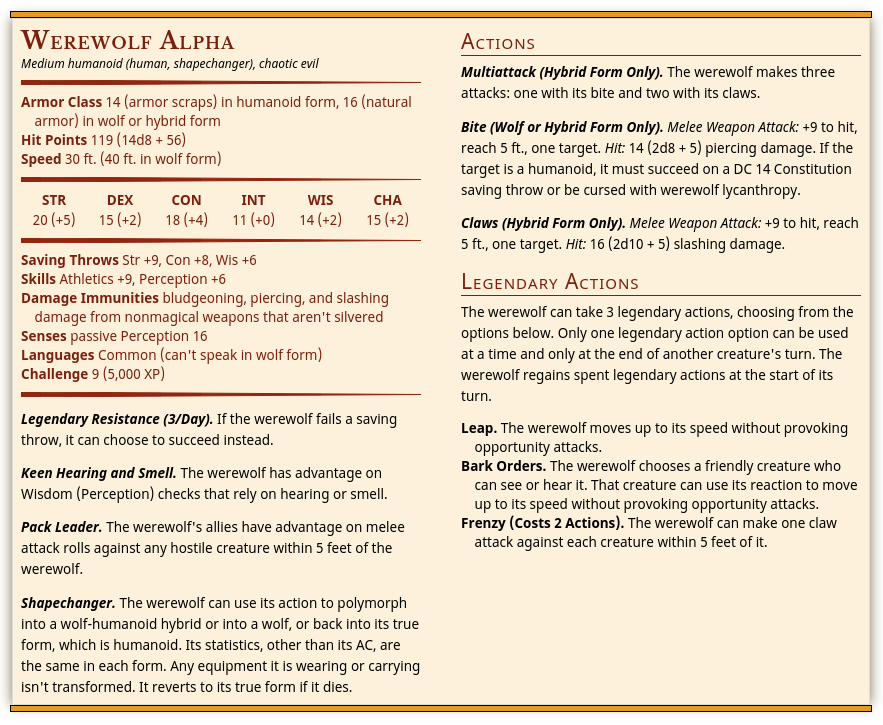


Valloric takes a different approach, and it is one that is best suited to website owners and bloggers who write about D&D monsters often. Name your creature, give it the attributes it needs (Tetra Cube works out bonuses and penalties) and if you want to create some abilities for it too. It’s focused on just D&D 5e stat blocks with any of the other layout and design considerations. Tetra Cube is a more straight-forward and therefore faster approach. You can use a text editor to create covers, item cards, spell lists, tables and monster blocks, note blocks and a wealth of content styles. Once you create an account, the approach is very similar to Homebrewery and just a good. If you’re won over by GM Binder then they even make it easy for you to port your content over. The Reddit community at /r/gmbinder/ offers support, ideas and shares creations. This is a free and Patreon supported onine tool.

Monster stat blocks, wide stat blocks and even descriptive text blocks are all possible. You can make spells, spell lists, class features, class features, cover pages and, of course, lots of stat blocks. Use a simple text editor and various templates to turn your words into something that looks like they’ve been through Wizards of the Coast’s InDesign team. There’s little doubt in my mind that the Homebrewery is brilliant. Let us know in the comments below what your prefered and alternative methods are. In this article, we look at four different sites from where you can get an official D&D looking stat block. There are several ways you can easily recreate this effect, some of them are free and require little effort at all. Have you noticed that when gamers share homebrew versions of monsters, NPCs and even lore they often come complete with a background that looks like aged paper? It’s the same style the official Dungeons & Dragons book use.


 0 kommentar(er)
0 kommentar(er)
